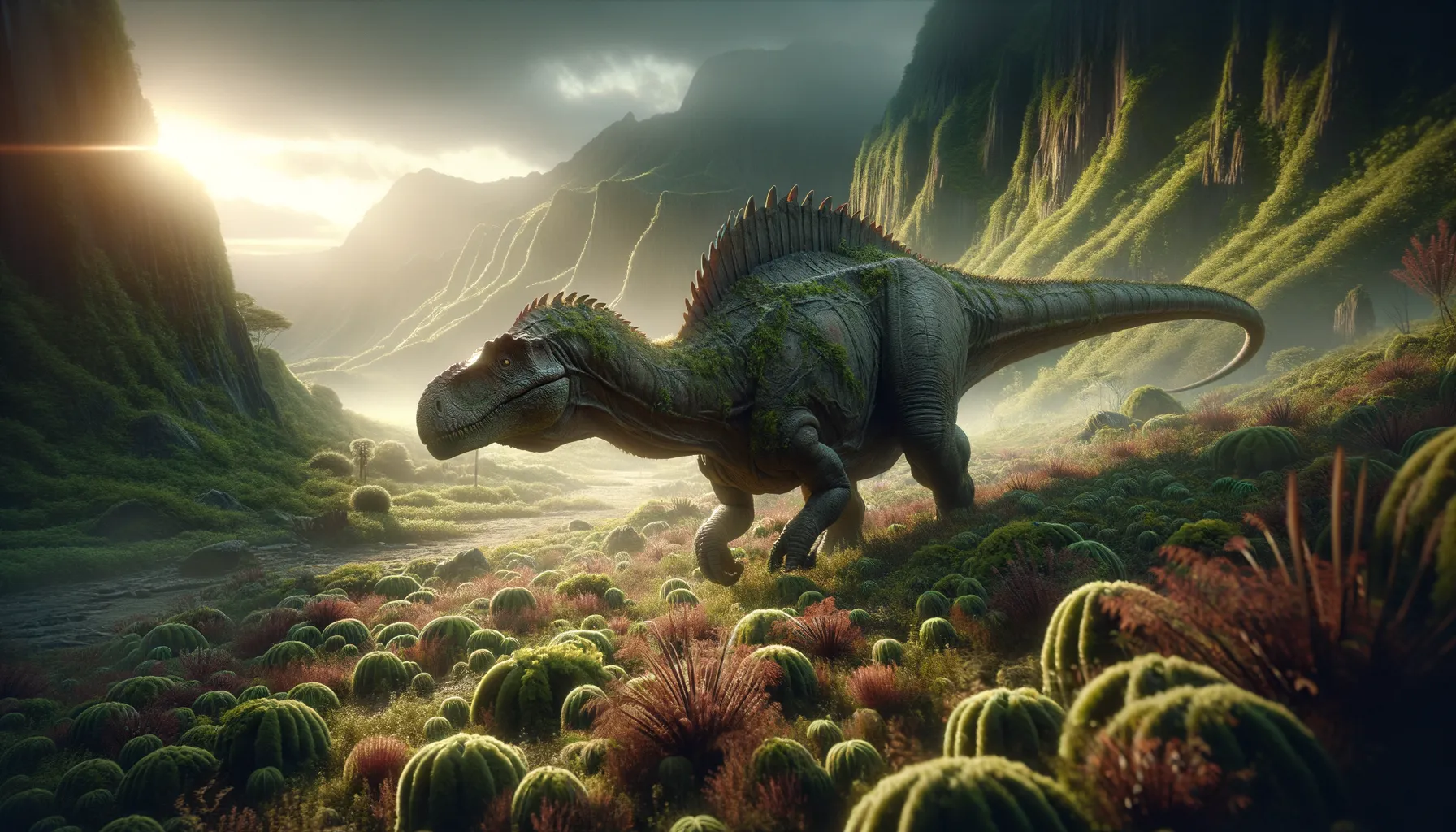
Zhejiangosaurus
Armor-clad herbivore of ancient China
Period
Cretaceous
Length
About 4 to 5 meters long.
Height
Roughly 2 to 3 meters at the hips.
Weight
Approximately 1.5 to 2 tons.
Zhejiangosaurus was a nodosaurid dinosaur known for its armored body. It roamed the Earth during the Late Cretaceous period, primarily found in what is now China. As a herbivore, it relied on its heavy armor as protection against predators. Its sturdy build indicates it was a slow-moving dinosaur, likely grazing low vegetation, and it played a key role in its ecosystem as a plant consumer.
Diet
Zhejiangosaurus was a herbivore, feeding mainly on low-lying plants and foliage. Its diet consisted largely of tough, fibrous vegetation that it could process thanks to its broad, flat teeth.
Hunting
As a herbivore, Zhejiangosaurus did not hunt for prey but foraged for its plant-based diet. It likely relied on its sense of smell and sight to locate food sources in its environment.
Environmental challenges
Living in an area that was likely semi-arid, Zhejiangosaurus faced challenges such as finding enough food and water. Its heavily armored body was an adaptation to evade predation rather than environmental changes. During seasonal fluctuations, it might have migrated short distances to find more abundant resources.
Speed
Slow-moving due to its large size.
Lifespan
Estimated to be several decades.
First discovery
Discovered in 2007 in Zhejiang Province, China.
Fun Facts
- Zhejiangosaurus was a dinosaur that lived during the Late Cretaceous period, around 92 million years ago.
- It was discovered in the Zhejiang Province of China, which is how it got its name.
- Zhejiangosaurus was part of the nodosaur family, known for their armored plates and spikes.
- This dinosaur was a herbivore, meaning it fed on plants and vegetation.
- Its body structure suggests it was a slow-moving dinosaur that possibly relied on its armor for defense against predators.
- The Zhejiangosaurus's exact size is still unknown, but it is estimated to have been about the length of a car.
- Fossil evidence of Zhejiangosaurus helps scientists understand the diversity of dinosaurs in Asia during the Cretaceous period.
Growth and Development
Zhejiangosaurus likely grew at a moderate pace, spending a significant period in juvenile stages before reaching full maturity. Its growth might have been influenced by the abundance of food and environmental conditions. The development of its armor was crucial and likely became more prominent as it approached adulthood.
Habitat
The habitat of Zhejiangosaurus was mainly the floodplain regions of ancient China. This environment consisted of variable landscapes, including forests and open areas with ample foliage. Its presence in these regions indicates it preferred areas with plenty of vegetation to graze.
Interaction with other species
Zhejiangosaurus shared its habitat with a variety of other dinosaurs and smaller vertebrates. Its heavy armor provided protection from predators like theropods that might have preyed upon less armored herbivores. It likely coexisted with other herbivorous dinosaurs, competing for similar food resources.
Natural lifespan
Zhejiangosaurus had a natural lifespan of several decades.
Reproduction
Like many dinosaurs, Zhejiangosaurus likely laid eggs, with females possibly creating nests in the ground. The young would have been small and vulnerable, relying on their parents for protection during early development. Parental care, if present, might have involved guarding the nest from predators.
Social behaviour
Zhejiangosaurus might have been a solitary creature, though some evidence suggests it could also have lived in small groups for added protection. Its social interactions were likely limited to mating and possibly group migration in search of food.
Fossil locations
Fossils of Zhejiangosaurus have been primarily found in Zhejiang Province in China. The region's geology explains the preservation of its remains, providing valuable insights into its life and environment during the Late Cretaceous. Its discovery in 2007 has expanded knowledge of the diversity of armored dinosaurs in Asia.
